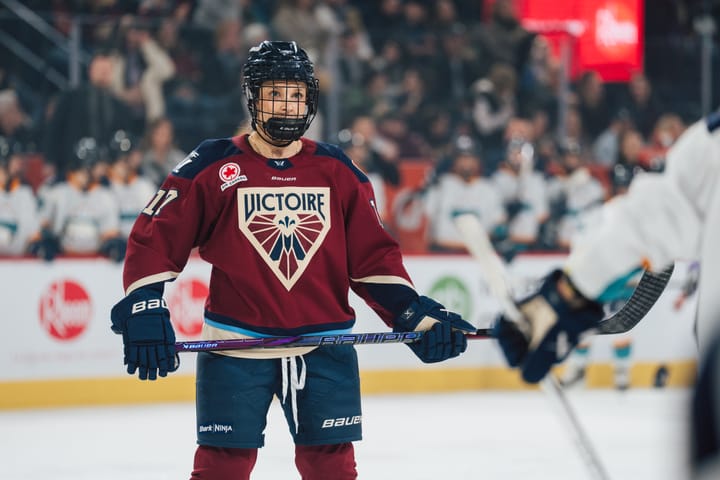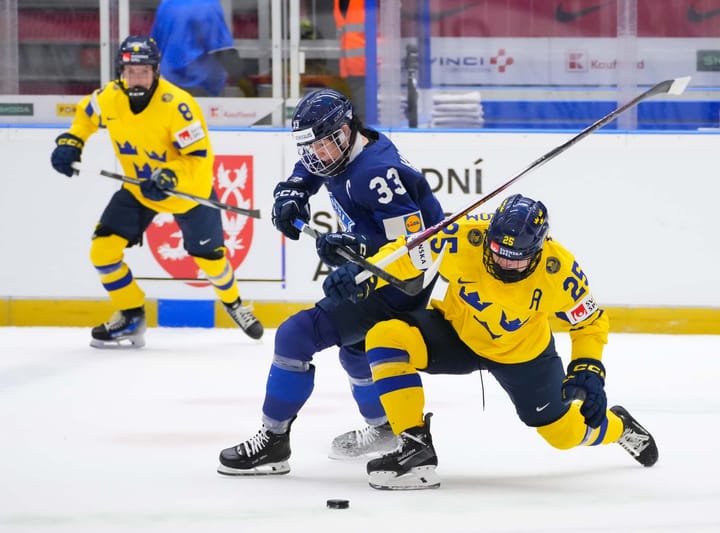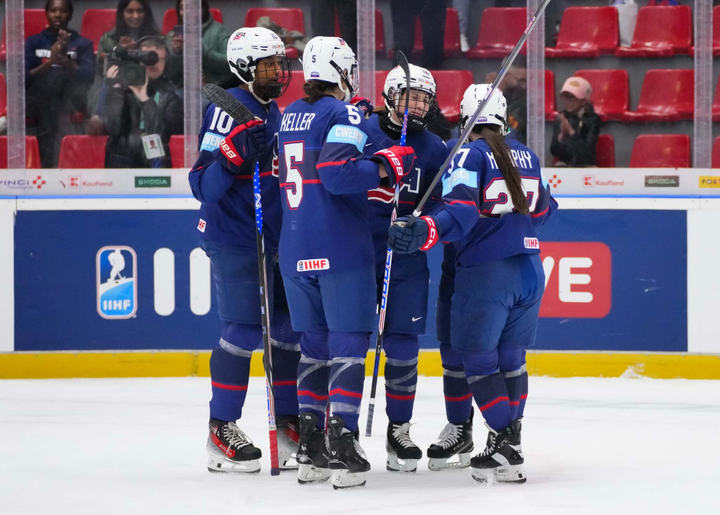Division 3 Women’s Hockey 101
A must-read 101 for D3 NCAA women's hockey.

If you talk about women’s college hockey, most people will immediately think of the big guns: Wisconsin, Ohio State, Colgate, and the like. But did you know there’s much more to the sport? Enter Division 3 hockey!
What do you mean, “much more”?
Much more! There are only 44 teams eligible for the National Collegiate (NC) women’s hockey championship—what most people think of as college hockey. But there are 78 other women’s hockey teams playing in Division 3 (D3). This year, 4 new teams will take the ice for the first time, and 2 more teams are slated to come online next year. That’s almost twice as many teams as there are in the NC division!
What’s the difference?
The defining feature of all D3 sports is the lack of athletic scholarships. Merit scholarships and other financial aid are available, just as there are for students who are not athletes. But campus compliance officers and the NCAA check to be sure that aid isn’t going to athletes disproportionately and becoming a de facto athletic scholarship. If a school is found to have illegally done that, they face a punishment that can include vacating wins and championships.
Any other differences?
Other than the scholarships, not really. D3 teams play a shorter schedule than NC teams: they can’t play their first counting game until the end of October or beginning of November, depending on how weekends and the calendar match up. That’s more than a month after the NC schedule starts. D3 teams are also limited to 25 regular-season games, 9 fewer than NC teams are allowed to play.
WIH: Rivier’s Jessica Driscoll recorded the first goal in @mascacsports women’s ice hockey history tonight — and it only took 13 seconds!
— Rivier University Athletics (@RivierRaiders) November 8, 2024
This tally also marked the fastest goal scored in the program’s history.#RollRaiders | #d3hky pic.twitter.com/thPVXCtMzM
What about on the ice? Does the game look any different?
The rules are the same. Most games will use 4 on-ice officials, 2 referees and 2 linespeople. Teams can dress 19 skaters and 3 goalies. At first glance, if you don’t know which teams are playing, you probably wouldn’t be able to tell whether you’re watching an NC game or a D3 game. One difference is that NC games are allowed to use video review in some instances, but D3 games cannot do so, even if video exists. But the game itself looks almost identical regardless of who’s playing. A D3 game might feel a touch slower or sloppier than an NC game, depending on what teams are playing. That’s really it.
What about a championship?
D3 has its own championship! The first women’s D3 championship was held in 2002, a year after the first women’s NC championship. Every March since then except for the pandemic years of 2020 and 2021, D3 has crowned their own champion. One difference is that the semifinals and final of the NC championship are always held in a predetermined location, while the last weekend of the D3 championships is typically hosted by one of the competing teams, usually the highest remaining seed with an appropriate facility. Of the 90 championships sponsored by the NCAA, women’s D3 hockey was the only one to regularly be hosted by a competitor, with the site for the last weekend not determined until the weekend before. As of last year, though, the NCAA has decided to try alternating a predetermined site with a competing team’s site, and see how it works. The 2024-2025 championship weekend will be held in River Falls, WI.
How many teams get to play in the championship?
The number of teams in any D3 championship is determined by the NCAA’s access ratio, which is currently set at 1 berth for every 6 teams. This is an improvement from 1 berth for every 6.5 teams last season. This year, since there are 78 teams playing women’s D3 hockey, one would expect to see 13 tournament berths available. However, the NCAA requires sports “to achieve the new sponsorship number the year prior to asking for an increase” in berths. Thus, this year’s tournament uses last year’s count of 74 teams, which means a 12-team tournament. For the 2025-2026 season, I would expect to see a tournament of 13 teams.
Who gets in?
Just like in the NC championship, there are automatic berths for conferences and at-large spots available. Every conference that has 6 or more members has an automatic berth, which typically goes to the winner of its conference tournament. This season, 8 conferences have autobids. That leaves 4 at-large berths available to the highest-ranked teams. This year, the ranking will be determined by NPI, same as for the NC division, although the weighting of the components may differ between the divisions.
How do I watch all this hockey?
Right now, the most reliable aggregate schedule source is the D3 women’s score page at USCHO.com. Ticket prices are affordable, and some schools have free entry. Women’s regular season games don’t typically draw huge crowds, so you can decide to attend on the spur of the moment and get a seat that’s among the best in the rink. You can find information about each school’s home rink location, ticket prices, and anything else you need to know on the school’s athletics website. Expect a game to take about 2 hours from opening puck drop to final horn. That’s a little quicker than a typical NC game, because most D3 games don’t have media timeouts.
What if I can’t get there?
This is one of the best parts of D3: most of the games are streamed freely, no subscription required! The quality varies, from a static one-camera feed with no commentary to a professional level multicamera broadcast with play-by-play and commentary, and everything in between. Sometimes you’ll have the choice to buy an HD feed or watch a free low-res stream. Some schools, especially those with broadcasting programs, have student-run production teams, while others contract out their broadcasts to production companies. Expect the game stream to go live about 10 minutes before game time.
The easiest way to get to the stream is to visit the athletics website of the home team. Sometimes, the day’s events are right there on the front page, with a link to the live stats, an audio stream if there is one, and a video stream. Otherwise, go to the schedule page of the home team and look at the line for the game you want to stream.
Anything else?
That’s all the basics. D3 hockey is great hockey, with all the action and rivalries you’d expect. The only thing missing is the athletic scholarships.





Comments ()